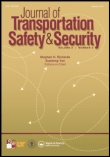
Journal of Transportation Safety & Security
Scope & Guideline
Bridging theory and practice in transportation safety.
Introduction
Aims and Scopes
- Transportation Safety Analysis:
The journal prioritizes research that investigates factors affecting transportation safety, including driver behavior, environmental conditions, vehicle interactions, and infrastructure design. - Security in Transportation Systems:
It also addresses security concerns within transportation systems, exploring methodologies for risk assessment, incident response, and the integration of safety and security protocols. - Data-Driven Approaches:
A core focus is on utilizing data-driven techniques, including machine learning, statistical modeling, and simulation, to analyze and predict safety outcomes. - Human Factors and Behavior:
The journal emphasizes understanding the human element in transportation systems, including driver distraction, fatigue, decision-making processes, and behavioral responses. - Emerging Technologies and Their Impacts:
Research on the implications of new technologies, such as autonomous vehicles and smart transportation systems, is a significant area of focus, particularly concerning their effect on safety and operational efficiency. - Policy and Regulation Impact Studies:
The journal also explores the impact of transportation policies and regulations on safety performance, including analyses of laws related to seatbelt use, speed limits, and vehicle safety standards.
Trending and Emerging
- Integration of Autonomous Vehicle Safety:
Research related to the safety implications of autonomous vehicles is on the rise, addressing both the technological and behavioral aspects of these vehicles in various traffic scenarios. - Impact of Climate and Weather on Safety:
There is an increasing focus on how climate and weather conditions affect transportation safety, with studies exploring their influence on crash risk and driver behavior. - Real-Time Risk Assessment and Decision Support Systems:
Emerging methodologies for real-time risk assessment and decision support systems are gaining traction, reflecting the need for proactive rather than reactive safety measures. - Exploration of Vulnerable Road Users:
Research examining the safety of vulnerable road users, such as pedestrians and cyclists, is becoming more prominent, highlighting the need for inclusive safety measures in urban planning. - Use of Big Data and Advanced Analytics:
The integration of big data analytics in transportation safety research is trending, emphasizing the use of diverse data sources and innovative analytical approaches to enhance safety outcomes. - Behavioral Insights into Driver Actions:
Emerging themes include in-depth analyses of driver behavior under various conditions, including distractions, fatigue, and decision-making processes during critical driving situations.
Declining or Waning
- Traditional Accident Analysis Methods:
There seems to be a decline in research focused solely on traditional statistical accident analysis methods, as newer data-driven techniques and machine learning approaches gain traction. - Generalized Studies Without Context-Specific Insights:
Research that lacks specific contextual insights into local or regional transportation issues is becoming less frequent, as the journal shifts towards more localized studies that provide actionable insights. - Focus on Single-Mode Transportation:
There is a noticeable decrease in studies that only focus on single modes of transportation (e.g., road safety alone), as interdisciplinary and multimodal approaches gain more attention.
Similar Journals

Promet-Traffic & Transportation
Shaping Sustainable Transportation Systems WorldwidePromet-Traffic & Transportation is a premier open-access journal published by SVEUCILISTE U ZAGREBU, FAKULTET PROMETNIH ZNANOSTI, dedicated to advancing the fields of traffic and transportation engineering. Since its inception in 2001, the journal has played a crucial role in disseminating innovative research and best practices within its scope, which embraces civil and structural engineering, urban studies, and various engineering disciplines. With a Q3 ranking in multiple categories as of 2023, including Civil and Structural Engineering and Ocean Engineering, Promet is positioned to provide valuable insights into contemporary challenges and solutions in transportation systems. Open-access since 2013, the journal ensures that all published articles are freely available to researchers, practitioners, and students globally, fostering a collaborative environment for knowledge exchange. Based in Croatia, it serves as an essential platform for interdisciplinary studies that influence the future of traffic and transportation policies and practices.
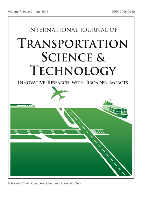
International Journal of Transportation Science and Technology
Connecting research with real-world transportation challenges.The International Journal of Transportation Science and Technology, published by KEAI PUBLISHING LTD, stands as a pivotal resource in the fields of transportation, automotive engineering, civil and structural engineering, and policy management. With a robust Open Access model since its inception in 2012, this journal provides unparalleled visibility to research that impacts real-world transportation systems and infrastructure. The journal proudly holds a Q1 category ranking in crucial engineering fields, reflecting its high impact and quality of published research. Its diverse scope and comprehensive coverage make it an essential platform for researchers, professionals, and students alike who are eager to contribute to the advancement of transportation science and technology. With impressive Scopus rankings underscoring its relevance in environmental science and social sciences related to transport, the International Journal of Transportation Science and Technology continues to foster innovation and influence policy development globally, addressing the challenges of modern transportation systems.
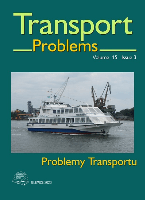
Transport Problems
Pioneering Research for Global Transport ChallengesTransport Problems, published by the Silesian University of Technology, Faculty of Transport, is a distinguished open-access journal that has been advancing scholarship in the fields of Automotive Engineering, Mechanical Engineering, and Transportation since its inception in 2007. With an ISSN of 1896-0596 and an E-ISSN of 2300-861X, this journal serves as a vital platform for researchers and practitioners to disseminate innovative research findings and explore fundamental issues in transport systems and technologies. Based in Poland, the journal covers various topics including transportation logistics, vehicle dynamics, and environmental impacts, thereby addressing critical challenges faced in the transportation sector globally. As reflected in its Scopus rankings, the journal occupies respectable quartiles and continues to contribute valuable insights to the academic community. By making its content freely accessible, Transport Problems significantly enhances the ability of researchers and students alike to engage with the latest developments in transport engineering and contribute to this ever-evolving field.
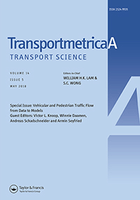
Transportmetrica A-Transport Science
Fostering Excellence in Transport Research and ApplicationTransportmetrica A-Transport Science, published by Taylor & Francis Ltd, is an influential journal at the forefront of transport science research. With an ISSN of 2324-9935 and an E-ISSN of 2324-9943, the journal spans a diverse range of topics within the field of transportation and engineering. Since its inception in 2013, it has aimed to provide a platform for high-quality, innovative research, reflecting significant advancements and challenges in transportation systems. Recognized for its academic rigor, it has achieved a Q1 ranking in Engineering (miscellaneous) and a Q2 ranking in Transportation for 2023, reflecting its impact and relevance in these fields. With impressive Scopus rankings of #31/307 in General Engineering and #31/141 in Transportation, the journal is positioned in the top 90th and 78th percentiles respectively. Though not an open-access publication, Transportmetrica A promotes accessibility of knowledge and strives to foster discourse among researchers, professionals, and students alike, making it an essential resource for anyone invested in the future of transportation science.

JOURNAL OF ADVANCED TRANSPORTATION
Innovative Research for Evolving Transportation NeedsJOURNAL OF ADVANCED TRANSPORTATION, published by WILEY-HINDAWI, stands as a pivotal platform in the fields of automotive engineering, computer science applications, economics, mechanical engineering, and strategy and management. With an impressive impact factor and positioned in the Q2 quartile across multiple categories as of 2023, this open-access journal offers researchers, professionals, and students unparalleled opportunities to disseminate and access cutting-edge research. Operating under an open access model since 2017, the journal fosters global collaboration and knowledge exchange, encouraging innovative solutions to contemporary transportation challenges. Its comprehensive scope, spanning converged years from 1979 to 2024, reflects its commitment to addressing the evolving landscape of transport systems worldwide. Researchers from diverse disciplines are invited to contribute transformative studies that advance the field and inspire future endeavors.
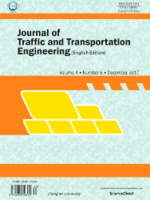
Journal of Traffic and Transportation Engineering-English Edition
Transforming Transportation Through Open Access Scholarship.Journal of Traffic and Transportation Engineering-English Edition, published by KEAI PUBLISHING LTD, is a leading open-access journal that has been disseminating valuable research in the realms of civil and structural engineering, as well as transportation studies since 2014. With a robust impact factor reflected by its prestigious Q1 rankings in both Civil and Structural Engineering and Transportation, this journal stands at the forefront of innovation and scholarship, featuring contributions from experts across the globe. The journal is particularly noted for its practical and theoretical advancements in traffic and transportation engineering, making it indispensable for researchers, industry professionals, and students aiming to deepen their understanding of these critical fields. Dedicated to providing a platform for high-quality interdisciplinary research, the Journal of Traffic and Transportation Engineering embraces the principles of open access, ensuring that all published articles are freely available to foster knowledge sharing and collaboration within the community. With its headquarters located in Beijing, China, the journal continues to push boundaries and set new standards in the field of traffic and transportation research.
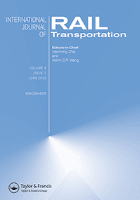
International Journal of Rail Transportation
Driving insights in rail transportation and beyond.International Journal of Rail Transportation is a premier academic publication dedicated to advancing the field of rail transportation, published by Taylor & Francis Ltd. With an impressive convergence of scholarly contributions from 2013 to 2024, the journal aims to disseminate high-quality research and innovative ideas in automotive engineering, mechanics of materials, and transportation. The journal proudly holds a Q1 ranking in both Automotive Engineering and Mechanics of Materials for 2023, as well as a Q2 ranking in Transportation, signifying its impact and relevance in the respective disciplines. Additionally, it is recognized within the top percentiles in its Scopus rankings, affirming its commitment to producing significant insights that inform both academic and industrial practices. While currently not open access, the journal strives to connect researchers, professionals, and students with cutting-edge developments in rail transportation. By fostering collaboration and knowledge sharing, the *International Journal of Rail Transportation* serves as an essential resource for those seeking to push the boundaries of transport engineering and contribute to sustainable infrastructure solutions.

ITE JOURNAL-INSTITUTE OF TRANSPORTATION ENGINEERS
Exploring the Future of Transportation SystemsITE JOURNAL - INSTITUTE OF TRANSPORTATION ENGINEERS is a distinguished publication that serves as a vital resource in the fields of Automotive Engineering and Mechanical Engineering, bridging the gap between research and practical application in transportation systems. Published by the Institute of Transportation Engineers in the United States, this journal has been contributing to the academic discourse since 1978 and continues to be a relevant platform for innovative research and insights. The journal currently holds a Q4 ranking in both Automotive Engineering and Mechanical Engineering categories, reflecting its niche but impactful presence in the Scopus database. Although the journal is not open access, it remains a critical outlet for researchers and professionals looking to advance their knowledge and influence practices in transportation engineering. With its commitment to disseminating quality research, the ITE Journal is a must-read for anyone involved in the transportation sector seeking to stay ahead in this dynamic field.
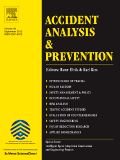
ACCIDENT ANALYSIS AND PREVENTION
Advancing Safety Through Insightful ResearchACCIDENT ANALYSIS AND PREVENTION is a premier journal dedicated to the multidisciplinary exploration of the factors contributing to accidents and strategies for their prevention. Published by PERGAMON-ELSEVIER SCIENCE LTD in the United Kingdom, this esteemed journal has made significant strides since its inception in 1969, with ongoing publications until 2024. With a notable impact factor and recognition as a Q1 journal across multiple categories including Human Factors and Ergonomics, Law, and Public Health, it stands out in the field. Its Scopus rankings further underline its excellence, placing it within the top tiers of safety, risk, and reliability research. Researchers, professionals, and students are encouraged to engage with this journal to stay at the forefront of accident prevention methodologies and research advancements, fostering an environment of safety and risk assessment innovation.
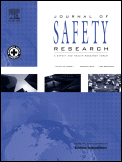
JOURNAL OF SAFETY RESEARCH
Championing excellence in safety research since 1969.The JOURNAL OF SAFETY RESEARCH, published by Pergamon-Elsevier Science Ltd, stands as a premier platform for scholarly discourse within the domain of safety, risk, reliability, and quality. With an esteemed impact factor and a strong ranking of #38 out of 207 in its category as per Scopus, this journal maintains a distinguished Q1 quartile status, reflecting its influence and significance in advancing safety research since its inception in 1969. Researchers, practitioners, and students alike will find a wealth of knowledge here as the journal explores critical aspects of safety in various contexts, highlighting innovative strategies and empirical findings that contribute to improved safety outcomes globally. Though it operates under a traditional access format, the journal’s extensive repository of articles ensures that vital information remains accessible to its readership. The JOURNAL OF SAFETY RESEARCH is not only a cornerstone for those within the safety engineering field, but also a vital resource for professionals seeking to enhance their understanding of risk management and quality assurance methodologies.